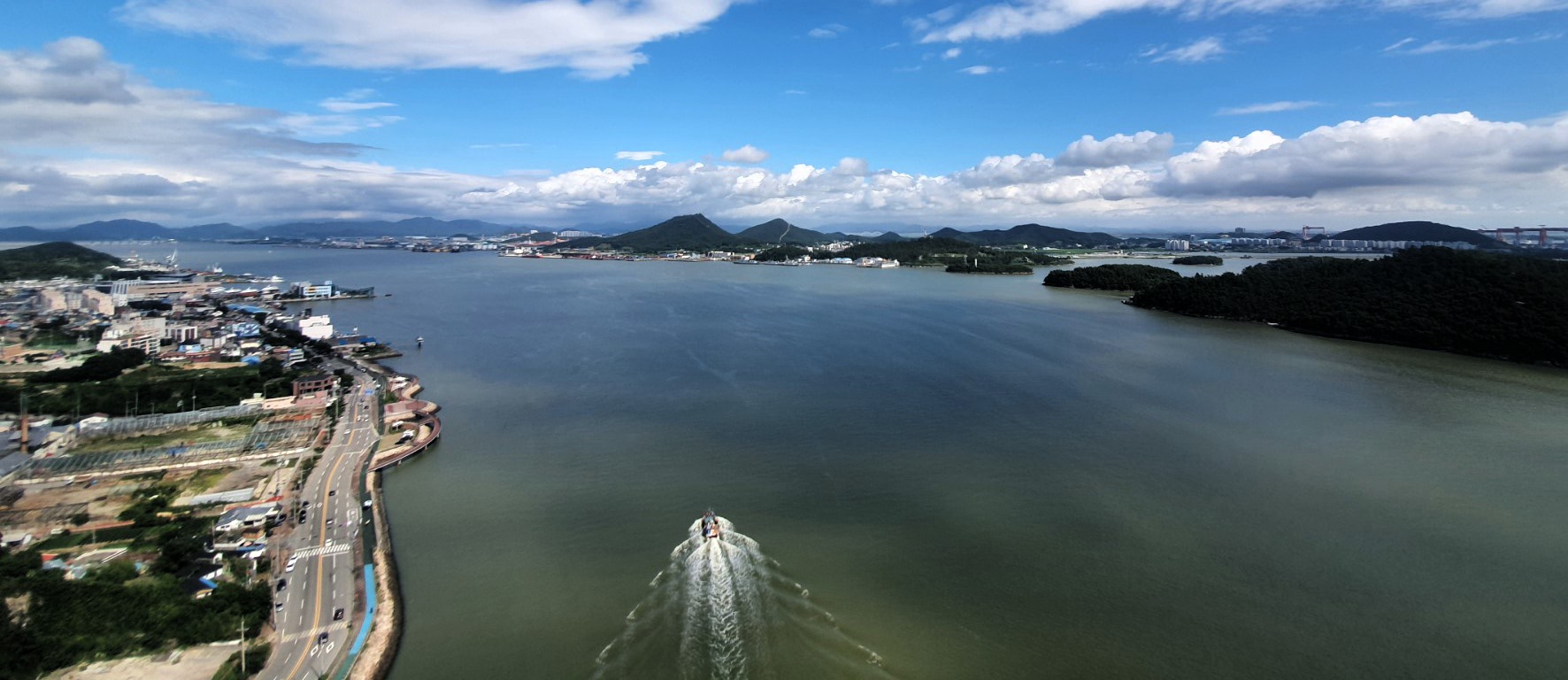지구과학 전문가
극지연구소, 그린란드에서 신종 물곰 발견, 라마조티우스 그로엔란덴시스 본문
극지연구소, 그린란드에서 신종 물곰 발견
북극 그린란드 이끼에서 신종 완보동물 발견… 조상 완보동물의 모습 단서 제공

□ 극지연구소는 북극 그린란드 이끼에서 신종 완보동물을 발견했다고 밝혔다.

□ 극지연구소 김지훈 박사와 고생물연구팀은 2019년 그린란드에서 채집한 이끼에서 신종 완보동물을 발견하고, 라마조티우스 그로엔란덴시스(Ramazzottius groenlandensis)로 명명했다. 라마조티우스는 생물 분류에 따른 이름이고 그로엔란덴시스는 ‘그린란드’를 의미한다.
□ 라마조티우스 그로엔란덴시스는 0.15~0.4 mm 크기의 초식 동물로 미세조류를 먹으며, 등 쪽의 울퉁불퉁한 다각형 표면과 몸통에 보이는 여러 개의 갈색 줄무늬가 특징이다.
□ 완보동물은 몸길이가 1 mm 이하의 작은 동물로, 물곰이라는 이름으로 더 잘 알려져 있다. 특수한 가사상태를 이용해 일반적으로 동물이 살 수 없는 조건을 견뎌낼 수 있기 때문에, 극지역이나 고산지대 같은 극한 환경에서도 발견된다.
□ 완보동물은 분류학적으로 이완보강 (Class Heterotarigrada)과 진완보강 (Class Eutardigrada)으로 나뉘는데, 이완보강은 진완보강과 달리 머리에 다수의 특징적인 감각기관을 보유한 것으로 알려졌다. 이 기관들은 물리적, 화학적 자극을 감지해 생존에 도움을 주는 역할을 하는 것으로 추정된다.
□ 신종은 분류학상 진완보강이지만, 이완보강과 같은 위치에 동일한 개수의 머리 감각기관을 가지는 특징을 나타냈다.
□ 연구팀은 이 같은 특징 덕분에 신종이, 완보동물의 진화 과정을 이해하고 둘로 나뉘기 전 조상 모습을 복원하는 데 중요한 단서가 될 것으로 기대했다. 현재까지 발견된 완보동물 화석 중 가장 오래된 것은 중생대 백악기 (9,200만 년 전) 진완보강 완보동물 화석이며, 조상 완보동물의 화석이나 형태는 아직 알려진 바가 없다.
□ 이번 연구결과는 국제학술지 Zoological Letters에 11월 게재되었다.
□ 논문의 제 1저자이자 교신저자인 김지훈 박사는 “부족한 퍼즐 조각을 가지고 과거의 모습을 되살리는 것이 고생물학의 매력이자 어려운 점이다. 앞으로도 현생 동물과 화석을 복합적으로 연구해 완보동물의 진화 과정의 비밀을 더 밝혀내겠다”고 전했다.

https://link.springer.com/article/10.1186/s40851-023-00221-w
| Abstract Phylum Tardigrada is represented by microscopic eight-legged panarthropods that inhabit terrestrial and marine environments. Although tardigrades are emerging model animals for areas of research including physiology, evolutionary biology, and astrobiology, knowledge of their external morphology remains insufficient. For instance, homologies between marine and terrestrial relatives largely remain unexplored. In the present study we provide detailed pictures of the head sensory organs in a new tardigrade, Ramazzottius groenlandensis sp. nov. Specimens were collected from a mixed moss and lichen sample on Ella Island, East Greenland. The new species differs from congeneric species in the presence of polygonal sculpturing on the dorsal cuticle, which is accentuated in the posterior region of the body, a lateral papilla on leg IV, and distinctive egg morphology. A Bayesian phylogenetic analysis (18S rRNA + 28S rRNA + COI) places the new species within the genus Ramazzottius with high confidence. Interestingly, the new species shows a full set of well-developed cephalic organs, which correspond to all sensory fields found in eutardigrades. Details on the full set of head organs were present only for heterotardigrades. The surface of these organs is covered with small pores, which presumably play a sensory role. This discovery suggests the homology of head sensory structures between heterotardigrades and eutardigrades, implying that the distinctive arrangement and positioning of sensory organs on the head is a plesiomorphic feature of tardigrades. Moreover, we find that the Ramazzottius oberhaeuseri morphotype forms a morphogroup, not a monophyletic species complex. |
'해양수산' 카테고리의 다른 글
| 북극 눈에 기록된 납, 10년 만에 절반으로 줄어. 그린란드 눈에서 대기 오염물질의 기원지와 변화 추적 (46) | 2023.12.06 |
|---|---|
| 해양안전 전문체험시설인 ‘국민해양안전관’, 진도에 문 연다 (48) | 2023.12.06 |
| 남해 연안 미세플라스틱 오염도 증가 추세 (17) | 2023.12.01 |
| 해양수산부, 한국해양교통안전공단. 부유물 감김사고 현황도 배포. 부유물 감김사고가 자주 발생하는 해역 한 눈에 본다 (21) | 2023.11.30 |
| 북극협력주간 앞두고 서울생활문화센터 서교(합정)에서 극지를 배경으로 한 연극 ‘시추’ 상영. 국립해양박물관에서 극지체험전시회 열려 (23) | 2023.11.24 |





